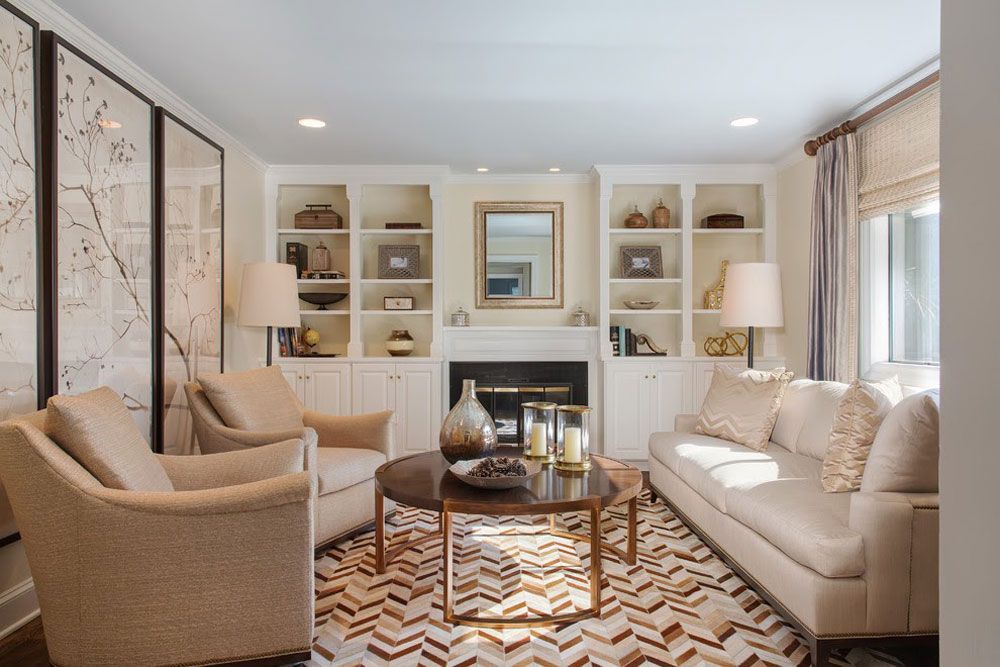
House design is more than just choosing a color palette or picking out furniture—it’s about crafting a living space that reflects your personal style, suits your lifestyle, and enhances your well-being. Whether you are building a new home or renovating an existing one, thoughtful house design takes into account aesthetics, functionality, and long-term sustainability.
In this article, we explore the essential components of house design, from layout and flow to choosing the right materials, and offer tips for creating a space that feels uniquely yours.
1. Understanding Your Design Needs
Before diving into house design, it’s crucial to assess your needs, lifestyle, and goals for the space. Think about the function of each room, how you live in the space, and what elements you truly value in your home. Consider these questions:
- Family Needs: How many bedrooms and bathrooms are required? Do you need a home office, a guest room, or additional storage?
- Lifestyle Preferences: Do you entertain often and need an open-plan living area? Are you someone who loves outdoor living and would benefit from a larger patio or garden?
- Future Goals: Are you planning to expand your family or need to design with aging in mind? Think about the long-term functionality of the space.
A clear understanding of your design needs is essential for creating a home that works for you both now and in the future.
2. Choosing the Right Floor Plan
The floor plan is the blueprint of your home, outlining the layout of rooms and the flow between them. The layout greatly influences the overall functionality of the space. When designing a home, consider the following elements:
Open-Concept vs. Traditional Layouts
Open-concept designs are highly popular today, particularly in living, dining, and kitchen spaces. These layouts create a sense of flow and openness, making spaces feel larger and more connected. They are ideal for social gatherings and families who like to spend time together in shared spaces.
On the other hand, traditional layouts offer more privacy by having distinct, separate rooms. While this layout can provide a more formal structure and separation between living spaces, it may feel less spacious and connected.
Room Sizes and Proportions
Consider the proportions of rooms based on your needs. If you love cooking and entertain often, a spacious kitchen with plenty of counter space and storage is a must. Bedrooms should provide enough room for comfortable furniture and personal space, while bathrooms should offer both functionality and comfort.
Take note of the flow between rooms. Circulation space, or the space around furniture and through doorways, is essential for easy movement and accessibility.
3. Maximizing Natural Light and Ventilation
Good design incorporates natural light and airflow into the space, improving energy efficiency and overall comfort. Proper lighting can transform a room, making it feel larger, warmer, and more inviting. Consider the following design strategies:
Maximizing Windows
Strategic placement of windows ensures that rooms receive ample natural light. Consider large windows in living areas and dining rooms, or even floor-to-ceiling windows that allow for expansive views. Windows not only brighten up a space but also connect the indoors with the outdoors, adding to the visual appeal of your home.
Skylights and Clerestory Windows
Skylights and clerestory windows (windows placed high on walls) are excellent ways to bring light into areas that may not have access to exterior walls. Skylights are ideal for bathrooms, hallways, and kitchens, while clerestory windows work well in spaces with high ceilings, like open-concept living rooms.
Cross-Ventilation
Ensure that your home is designed to take advantage of natural breezes by positioning windows to allow for cross-ventilation. This promotes better air circulation, reducing the need for artificial cooling during warmer months.
4. Selecting the Right Materials
The materials you choose for your home’s exterior and interior will play a significant role in the aesthetic and long-term performance of the space. From flooring to wall finishes, these materials should align with your design goals while being durable and practical.
Sustainable and Low-Maintenance Materials
Many homeowners today prioritize sustainability and environmental responsibility when selecting materials. Consider using eco-friendly options like bamboo flooring, recycled materials, or locally sourced stone. Additionally, materials like metal, concrete, and fiber-cement siding offer low-maintenance durability.
Natural Materials for Warmth and Texture
Incorporating natural materials such as wood, stone, and clay into your design creates a warm, welcoming atmosphere. Wooden beams, stone fireplaces, and textured stone flooring add timeless elegance and texture to your home’s design. These materials also help to establish a connection with the natural world outside.
High-Performance Windows and Insulation
Choose high-performance windows that are energy-efficient, helping to maintain a comfortable temperature inside your home. Insulation is another critical factor for both energy efficiency and comfort. Proper insulation in walls, ceilings, and floors helps regulate temperature and reduces the need for excessive heating or cooling.
5. Designing for Functionality
A well-designed home is one that works for the people who live in it. It’s not just about aesthetics—it’s about creating a space that feels intuitive, organized, and accessible. Below are some design considerations to ensure functionality:
Multi-Use Spaces
As homes are becoming smaller, many homeowners are opting for multi-functional spaces. For instance, a guest room can double as a home office, or a basement can be transformed into a home gym and entertainment area. Flexible layouts allow you to adapt to your changing needs over time.
Smart Home Features
Integrating technology into your design can add convenience and efficiency. Smart home features like automated lighting, temperature control, security systems, and voice-controlled assistants make everyday tasks more manageable. Additionally, incorporating wiring and tech-ready spaces for future upgrades ensures your home stays current as technology evolves.
Storage Solutions
Ample storage is a top priority for many homeowners. Incorporate built-in storage solutions, like custom closets, cabinets, and shelving, to keep your space organized. Consider hidden storage under stairs or in unused spaces to maximize your home’s potential. Smart storage designs help you avoid clutter while keeping your home stylish and functional.
6. Indoor-Outdoor Connection
Creating a seamless connection between your indoor living spaces and the outdoors enhances the feeling of space and brings nature into your home. Whether you have a small garden or a large yard, this connection promotes a relaxed, open atmosphere.
Outdoor Living Areas
Design your home with outdoor living in mind. Consider creating an outdoor kitchen, patio, or dining area where you can entertain guests or relax in peace. Sliding glass doors or folding walls can blur the line between the indoors and outdoors, providing a sense of continuity.
Landscaping and Curb Appeal
The exterior of your home should complement the interior design and provide a welcoming first impression. Incorporate thoughtful landscaping to enhance your home’s curb appeal. Choose plants that suit your climate, and consider features like outdoor lighting, pathways, and seating areas that make the outdoors more accessible and inviting.
7. Personalizing Your Space
House design should ultimately reflect your personality and preferences. Whether you prefer contemporary minimalism, rustic charm, or classic elegance, there are countless ways to infuse your unique style into the home.
Colors and Textures
Select a color palette that evokes the mood you want to create. For a calming atmosphere, use neutral tones like whites, grays, and soft blues. For a bold look, incorporate vibrant colors like deep greens or rich reds. Combining different textures—such as velvet, wood, and metal—can create depth and interest within your design.
Custom Details
Incorporating custom details into your design makes your home feel truly one-of-a-kind. Consider bespoke cabinetry, handpicked light fixtures, or custom-built furniture that reflect your aesthetic. Unique decorative elements, such as artwork, sculptures, or vintage finds, can further personalize the space.
8. Sustainability and Future-Proofing Your Home
Sustainability is an increasingly important aspect of home design. Designing with longevity and the environment in mind can reduce your carbon footprint and save you money in the long run.
Solar Panels and Energy Efficiency
Consider integrating solar panels into your home design to harness renewable energy. Additionally, energy-efficient windows, insulation, and appliances can help you minimize energy consumption while maintaining a comfortable home.
Resilient and Durable Materials
Opt for durable, high-quality materials that require minimal maintenance and can withstand the test of time. Materials like steel, stone, and concrete are durable and can endure various weather conditions, making them ideal for both exterior and interior use.
Conclusion: Creating the Home of Your Dreams
House design is a complex yet rewarding endeavor that requires careful thought and planning. By understanding your needs, considering the function and flow of spaces, selecting the right materials, and personalizing your design, you can create a home that fits your lifestyle and reflects your tastes. With the right design choices, your home can be more than just a building—it can be a sanctuary that brings you comfort, joy, and inspiration for years to come.
